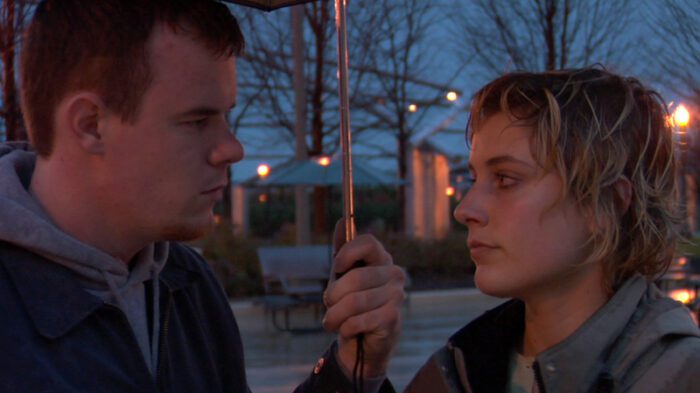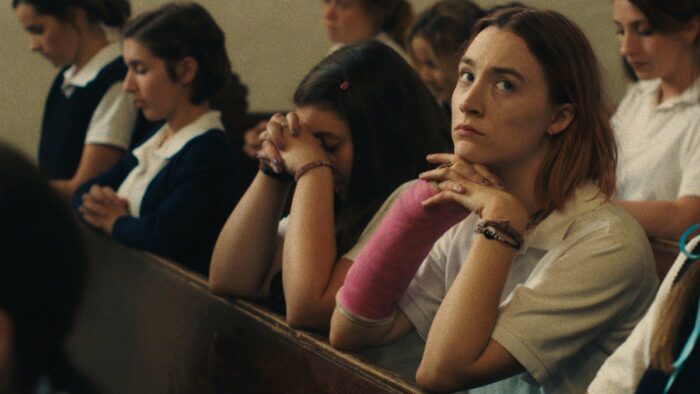People cannot stop talking about Barbie. The over-60-year-old doll is finally getting the live-action treatment in an upcoming film featuring certified movie stars Margo Robbie and Ryan Gosling. She’s a blond bimbo girl in a fantasy world created with care by Greta Gerwig.
Gerwig has had quite a career so far, from being an indie mumblecore actress to an Academy Award-nominated director. Though she only has three directorial credits under her belt Gerwig has managed to find a great amount of success in the industry and craft a signature style. She has become perhaps one of the most prolific female filmmakers of her generation and her films stand firm in the critical conversation. But do these metrics grant her auteur status?
Originally associated with the French New Wave, an auteur is seen as the “author” of a film, the primary creative force that injects their style into their work. Auteurs are typically thought to have a very recognizable style or make use of consistent themes or structure. Many times they also will work with the same crew or many of the same actors. We often look to directors like Alfred Hitchcock, Quentin Tarantino, or Wes Anderson as quintessential examples of auteurs, each of whom has very recognizable characteristics in their films. You can look at nearly any frame of The Grand Budapest Hotel and say “yep that’s definitely Wes Anderson.”
A lot of people today find auteur theory to be obsolete since filmmaking is such a collaborative effort. Others find that perhaps an actor could be considered an auteur, making them the author of their film. Perhaps it’s not as prevalent to us today as it was to the French, but auteur theory does provide a useful tool to analyze a director’s body of work. Which is exactly what this article intends to do.
Before her directorial work, Gerwig made her name as a micro-budget indie film actress. She mastered the art of an awkward delivery and brought a level of hyper-realism to each film she worked on. Her characters are so true to real life, that they hardly felt like characters at all, but rather an extension of her own personality.
Nights and Weekends (2008)

Her first directorial credit is on a film she co-starred in, co-wrote, and co-directed with Joe Swanberg. Said film Nights and Weekends (2008), was made on an impressively small budget of $15,000 and closely followed the long-distance relationship between Mattie (Gerwig) and James (Swanberg). There aren’t really any other characters in this couple’s story, a few pop up in the background, but their dynamic remains the central focus, shown through the abundant use of close-ups. Often feeling less like a movie and more like a documentary, Nights and Weekends is an incredibly realistic portrayal of the struggles and successes of dating. The singular often handheld camera prefers to just sit with these two characters and capture moments of tenderness and tension. What I am most impressed with is how realistic each of these interactions felt; there was no level of artifice here. Gerwig and Swanberg’s combined ability to capture such nuanced and visceral human emotions that were so relatable is astonishing.
There isn’t much of a narrative, so I understand this not being for everyone, but the slice of life is incredibly insightful and painfully relatable. It highlighted the joys and struggles that make us all human, which I find to be the central throughline in all of Gerwig’s work.
Lady Bird (2017)

Her next film and her first solo directing gig, Lady Bird (2017), has this same factor. With a much larger budget, a bigger cast, and more grandiose themes at play this is a much more advanced film. At its heart, its a coming-of-age story focused on the complicated relationship between a mother and daughter. But there is more to it than that. Like Nights and Weekends, there is a central relationship it focuses on, but Gerwig’s sophomore film expands to explore Lady Bird’s (Saoirse Ronan) relationships with her dad, her best friends, and her various boyfriends.
Lady Bird is stylistically different as well, but the budget allowed for a flashier look. Gone is the shaky handheld camera and documentary look, and in is a dynamic cinematic feel with bold framing choices but the emphasis on close-ups remains.
Once again the raw realism is just as prevalent. Many of the conversations in the film feel as though they are taken straight out of my own life. Teenagers are emotional, and Lady Bird shows that wide range of emotions. You can understand exactly what Lady Bird is feeling and you go on that journey with her. Some of this can certainly be credited to Saoirse Ronan who had established herself as an incredibly talented young actress.
Little Women (2019)

In auteur fashion Gerwig works with Ronan again in her next film Little Women (2019). This is significantly different from her previous works, in part because it’s an adaptation. It’s also a period piece, so visually upon a first glance it looks different as well. Less of Gerwig’s own personality is shown. You don’t get the awkward stumbling through a sentence that her other two films embraced, but pieces of her style still persist.
The filmmaking is more polished and refined, but we still get close-ups that beautifully frame the characters’ emotions. The script is tighter, but we still get moments of dialogue that are remarkably close to real life or illuminate a hidden idea. There is a warmth to Little Women, in both tone and lighting that also distinguishes it from Gerwig’s other films. It is inherently more feel-good in nature since it’s based on the book.
Little Women, like all of Gerwig’s films, speaks to the human condition. It shows us what it means to be alive, to feel joy, to be furious, to feel pain. She highlights women’s issues from the perspective of women.
While perhaps not an auteur in the traditional sense, Greta Gerwig has directed and and written three films with an emotional quality to them that sets them apart from her peers. She may not have a visually specific and recognizable style, but she takes care to elevate her characters and makes them feel real to us. Barbie looks to be very stylized and I anticipate it to be more metaphorical and satirical than her three films to date, after all, it is rooted in a world of artifice, and less grounded in reality. But nonetheless, I think her themes of universal humanity and womanhood will continue to appear in all of her future films.



